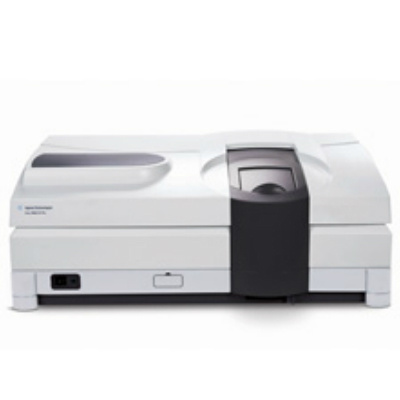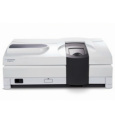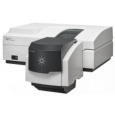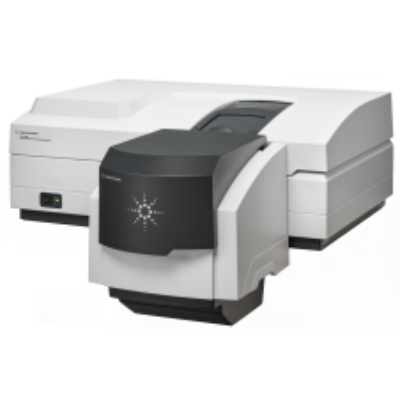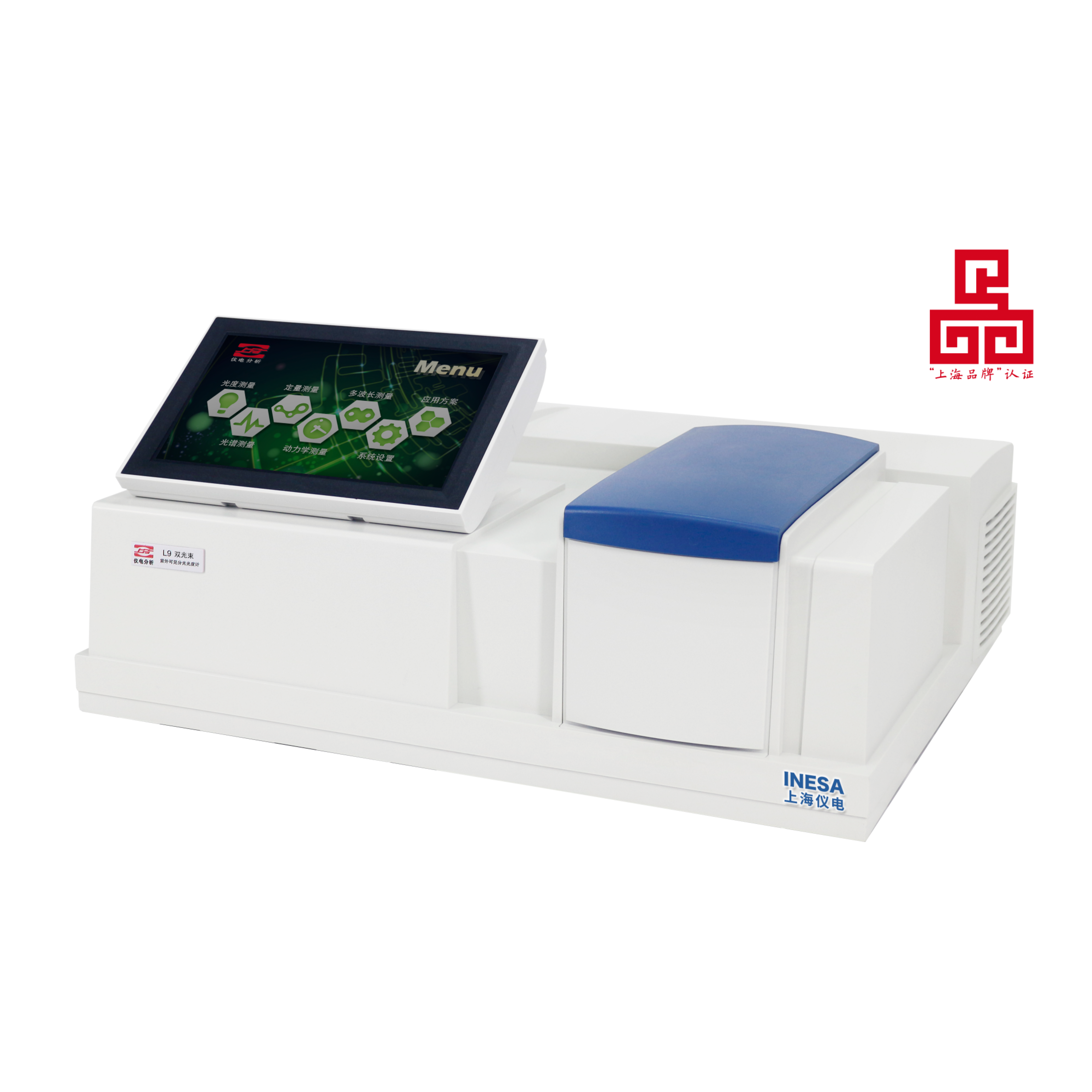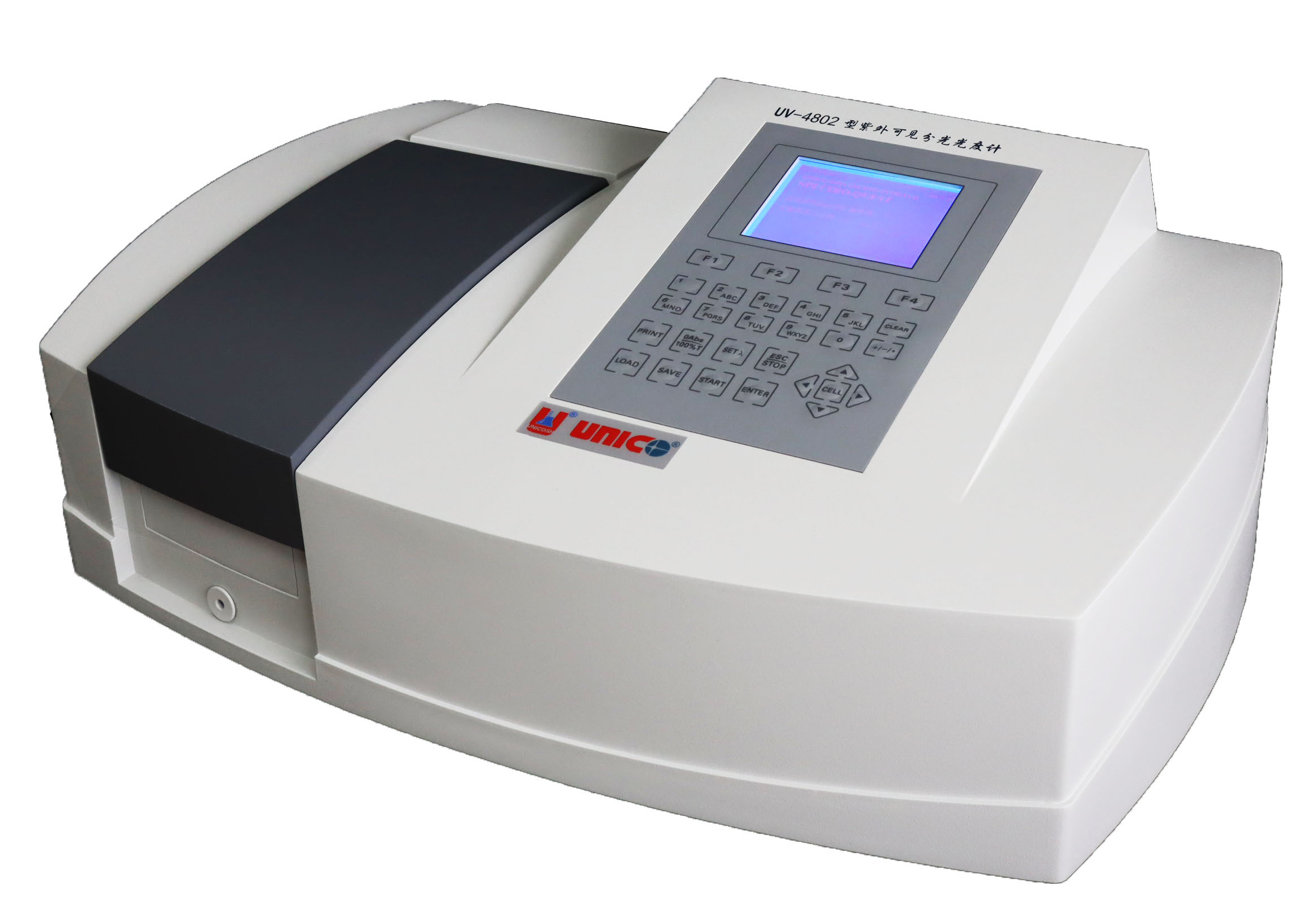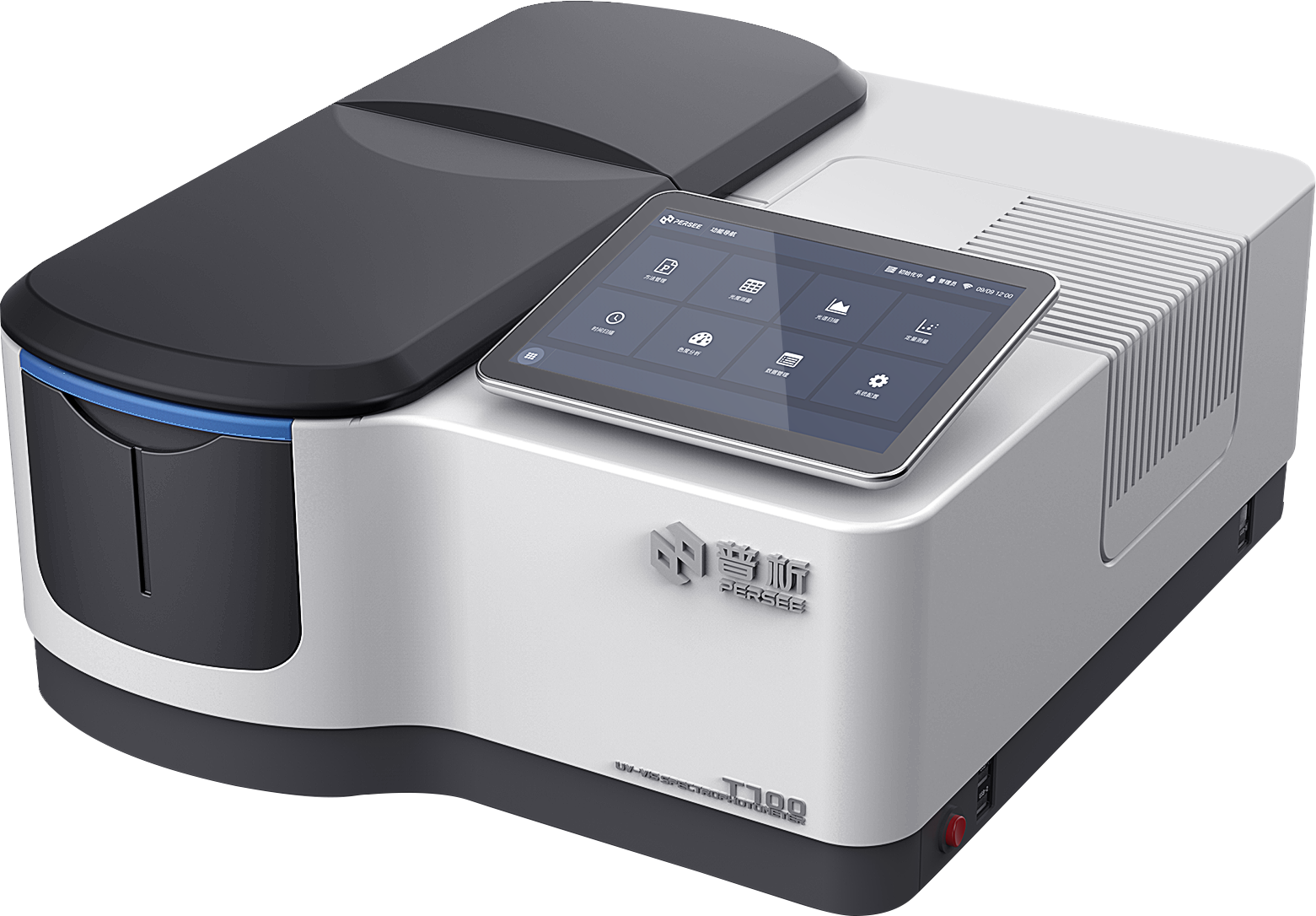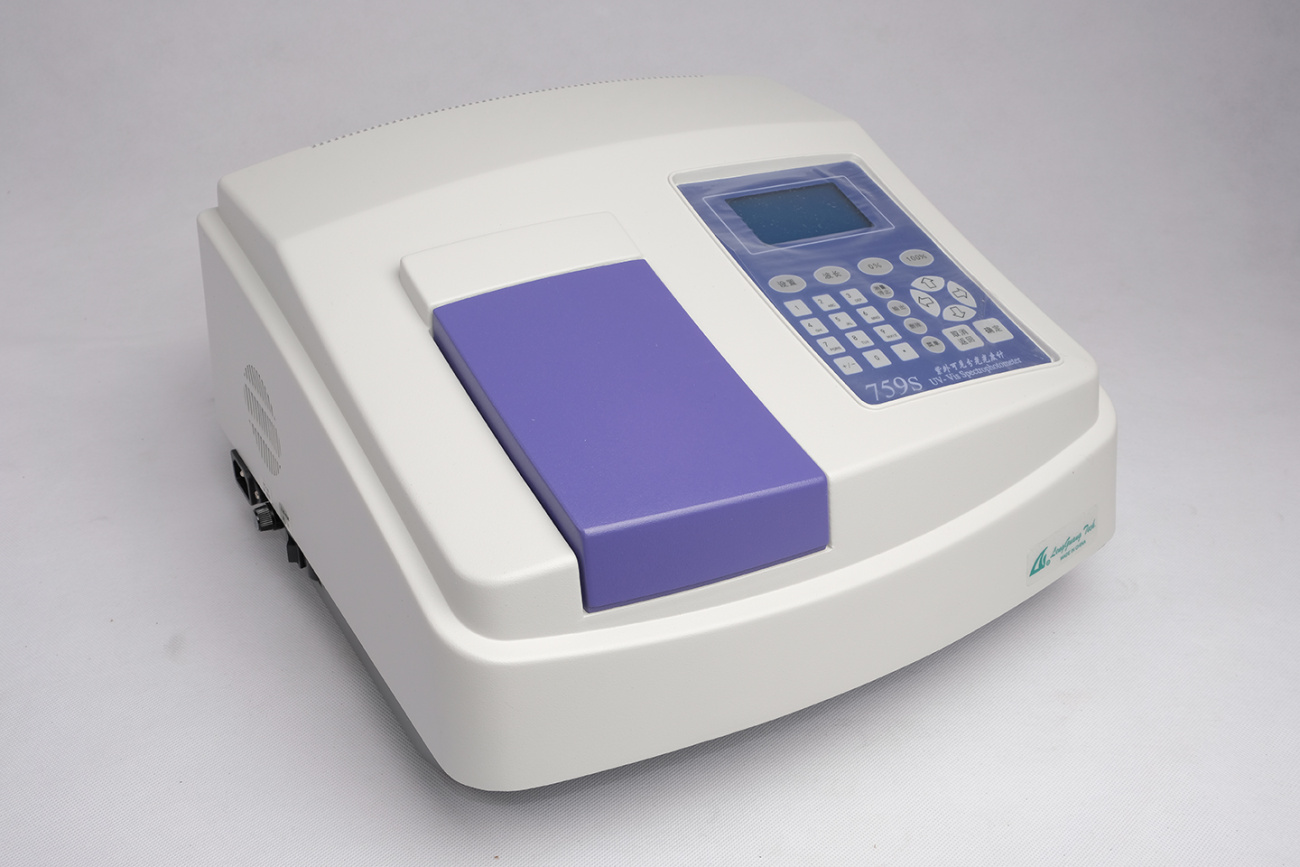方案详情
文
高级材料的生产需要快速、准确和最少的劳动密集型材料参数测定。折射率是光学材料特别是晶体材料应用所需的主要参数之一。本文主要利用分光光度计搭配可多角度自动控制的全能附件,采用两种分光光度法,对不同类型的材料,特别是单晶光学材料的折射率进行了研究。两种方法分别为:布鲁斯特定律方法以及在样品表面接近法线的低角度入射测试反射的方法。通过测试表明,两种方法获得的折射率几乎一致。
方案详情

Application Note AgilentGlass, ceramics, optics Trusted Answers Spectrophotometric Methods ofRefractive Indices Measurement Measuring the refractive index of single crystaloptical materials using two methods Authors Introduction N.S.Kozlova1, A.P. Kozlova1,E.V. Zabelina1.Zh.A. Goreeva1.I.S. Didenko1, T. Burt? The production of advanced materials requires fast, accurate, and minimallabor-intensive determinations of material parameters. One of the mainparameters required for the application of optical materials, in particularcrystals, is refractive index (n). Laboratory"Single crystals and Stock on their Basee'" There are three common methodologies for determining refractive index (1-3): NUST "MISiS", Russia 1) Goniometric method 2Agilent Technologies,Australia. A goniometer-spectrometer is used to measure transmission at angle, includingthe angles of minimum deviation of light and n is calculated from Snell's law. This method demands a transparent sample in form of a large prism withprecise angles between bottom plane and polished working planes. 2) Ellipsometric method An ellipsometer is used to directly measure amplitude ratios and phase shiftsof reflected light. This method requires a specific optical model for eachmaterial. Standard optical models are included in commercialsoftware packages but an optical model may not be includedif you have an unknown or new materials. 3) Spectrophotometric methods A spectrophotometer, with a sampling accessory, can be usedto rotate the sample and the detector to angles that allowabsolute specular reflectance data to be collected (or angulartransmission data). Spectrophotometric methods can be further broken down into3 mostly commonly used methodologies: 3.1) The Fresnel formulas Measurements of reflectance and transmittance of incidentlight, of p-and s-polarization, are made and n is calculatedfrom the Fresnel equations. This method requires not onlylarge polished sample surfaces but also software support tosolve the Fresnel equations. 3.2) Brewster’s law method Measurement of reflectance for incident light ofp-polarization at the Brewster angle (according Brewster'slaw). It is necessary to use samples with large surface areato achieve high accuracy measurements for the large angles. 3.3) Method of reflection at near-normal incidence This method is based on measurement of the reflectionspectrum from one surface at low angle of incidence close tothe near normal angle (0 deg to approx. 10 deg). This methodpermits one to determine the dispersion component of therefractive index from a single polished plane of the sample ina single measurement. Methods 3.2 and 3.3 do not require significant mathematicalpost data processing and can be introduced to any laboratoryequipped with a Cary UV-Vis-NIR spectrophotometer and theUniversal Measurement Accessory (UMA), Figure 1. The Cary 5000 with the UMA eliminates the need to usemultiple consoles, sample replacement and accessoryreconfiguration. Thus, it is possible to obtain a full description of the sample,without moving it. The UMA scheme consists of a fixed light source, 360°rotatable sample holder and an independent detector thatcan move around sample holder in a horizontal plane in therange of angles from 10 to 350° The UMA provides high quality data, measuring all thecharacteristics from a single consistent area of the sample.An advantage of this accessory is the ability to measurethe optical characteristics (absolute reflectance andtransmittance) under varying incident light polarizationand at different angles of incident light in the same area ofthe sample within one working sequence according to thescheme presented in Fig. 2. Figure 2. Scheme of measurement of reflectance (left) and transmittance(right). The Cary 5000 with the UMA is a suitable and unique solutionif you need to measure the refractive indices of samples andmaterials including difficult shaped samples,or when it is impossible to produce a sample in the formof a prism. This study presents the results of the measurements ofthe refractive indices for new crystals Gd.Al,Ga,O:Ce(GGAG) (4) using the Cary 5000 with the UMA by twospectrophotometric methods: 1. by Brewster's law (Method 3.2); 2. by the spectrum of reflection from one surface at lowangle of incidence close to normal (Method 3.3). GGAG belongs to the cubic crystal system and, therefore, ischaracterized by a single refractive index n. We obtained thespectral and angular dependence of reflection coefficientsof p-and s-polarized light in the range of angles (6- 71°).Forexample, Figure 3 presents the angular dependence ofreflection coefficients of p-and s-polarized light, Rp and Rs,respectively, for入=589 nm. The results have been publishedpreviously (4). Figure 3. Angular dependence of the reflection of p-and s-polarized light at入=589 nm (4): 1 -the Brewster angle area, 2-the area for the method ofreflection from one surface at normal incidence of light. Results and Discussion Determination of refractive index according toBrewster's law (Method 3.2). According to Brewster's law (2), if the incident light ispolarized in the plane of incidence (p-polarization), at someangle of incidence reflectivity is close to zero R~0. This angleis called the Brewsters angle 0 and is associated with therefractive index n of the material through equation 1 (2): o= arctan (n/n) where n, is refractive index air (n=1). To determine the values of the refractive index, we measuredthe spectral dependencies of the reflection coefficient atdifferent angles of incidence of p- polarized light. Figure 3presents the scheme of determination of the Brewster angle,for example, of the angular dependence of the reflectioncoefficient p-polarized light at the wavelength of 589 nm,where the angle of incidence was varied from 60° to 65° in 1° increments (area 1). As a result, it was found that theBrewster angle is around 60°. For accurate determination ofthe minimum angle (the Brewster angle) we used the methodof iterations by changing the pitch angle of the incidentlight from 1° to 0.04° steps. Then using equation (1) wedetermined n. The same procedure can be applied to other wavelengths.In our case we measured the angular dependence of thep-polarized light reflection coefficient at: 400 nm, 425 nm,589 nm, 650 nm, 700 nm, and 800 nm. For approximationof the refractive index experimental values we calculatedthe coefficients of the Cauchy equation (2) to obtain thedispersion dependences of refractive index (Figure 4). Figure 4. GdAl,Ga,O.:Ce refractive indices (4). Dotes - measured values,line- the Cauchy dispersion. Hence, to determine the refractive index, the sequenceof actions is as follows: 1) to measure the spectral dependence of the reflectancedepending on the angle of incidence of p-polarized lightbeam for wavelength you need (Figure3); 2) to find the area of angles corresponding the areaof minimum value of reflectance; 3) using the method of iterations by changing the pitch angleof the incident light of 1° to 0.04° to measure the angularspectral dependence of the reflectance depending onthe determined in step 2 area of angles of incidence ofp-polarized light beam for wavelength you need; 4) to determine the Brewster angle: it’s the angle whenthe reflectance value is minimum: 5) using equation (1) to obtain the refractive index forthis wavelength; .6) repeat steps 1 to 5 for another wavelengths; 7) approximate the refractive indices if necessary. Determination of refractive index using the spectrumof reflection from one surface at low angle of incidenceclose to normal (Method 3.3). The scheme for determination of the refractive indexaccording to this method corresponds to the area 2 inFigure 3. According to Figure 3 at low angle of incidenceclose to normal (up to 10°) intensities of reflection ofp-and s- polarized light become close. In this case, the reflection coefficient of light from onesurface can be represented as (2): where k (X) is the extinction coefficient. According to the formula (3) in order to estimate therefractive index it is necessary to know not only thevalue of the reflection coefficient R but also the valuesof the extinction coefficient k. However, for single crystalGd.Al,Ga.O.:Ce the values of the extinction coefficient kis negligibly small even in the absorption bands We can transform the formula (3) excluding the extinctioncoefficient k, and measure the reflection coefficient R at anangle of incidence close to the normal in the wavelengthrange of (200-720) nm with a step of 1 nm. This waywe can calculate the refractive indices n and constructdispersion curves (Fig. 5) according to the foregoing formula: Figure 5. GdAl,Ga,O:Ce refractive index dispersion obtained by reflectionfrom one surface (4). To avoid the reflection from the second face (the innersurface of the sample) it is better to use sample with agrinding finish surface on the opposite side or a sample withnon-planar faces. Values of n for GGAG obtained by these two methods areclose. So both methods may be introduced in the practice oflaboratories. Choice depends on the form of the sample. To establish the confidence interval of this method we carriedout metrological measurements on a reference sample of fused quartz. We measured the reflection coefficients at theangle of light incidence close to normal, and then calculatedthe metrological characteristics of the method. For thereference sample, the accuracy was+0.4%.This value fallsin the confidence interval of the method. Conclusion 1. A study of the use fo the Cary 5000 spectrophotometerwith Universal Measurement Accessory was conducted torefractive indices of different type of materials, especiallysingle crystal optical materials, by two spectrophotometricmethods -Brewster's law method; -reflection from one surface at low anglesof incidence close to normal. 2. Refractive indices obtained by the two methods were closeenough. A laboratory equipped with the Cary 5000 andUMA may choose any method. The best choice dependson the form of the sample. 3. The accuracy of the spectrophotometry method isless than 0.4%. 1. C.F. Bohren, D.R. Huffman Absorption and Scattering ofLight by Small Particles. Wiley Professional PaperbackEdition Published, 1998, 545 p. 2. S.I. Borisenko“Refraction Index and methods for itsexperimental determination", Tomsk: Tomsk PolytechnicUniversity,2014. ( 3. Kozlova N.S., K ozlova A.P., Goreeva Zh.A."Spectrophotometric Methods an d their Capabilities toStudy Material Optical P arameters", Proceedings of the 2nd I nternational Ura l Conference on Measurements (UralCon) 2017, p. 281-288 ) ( 4. N .S.K o zlova, O.A. Busanov, E.V. Za b elina, A. P . Kozlova,V.M. Kasimova "Optical properti e s a n d refractive indicesof Gd Al,Ga,O.: C et crystals",Crystallography Reports, v. 61,No. 3, pp. 474-478,2016. ) www.agilent.com/chem ( O A gilent Technologies, Inc. 2019Printed in the USA, January 4, 2019 ) 高级材料的生产需要快速、准确和最少的劳动密集型材料参数测定。折射率是光学材料特别是晶体材料应用所需的主要参数之一。本文主要利用分光光度计搭配可多角度自动控制的全能附件,采用两种分光光度法,对不同类型的材料,特别是单晶光学材料的折射率进行了研究。两种方法分别为:布鲁斯特定律方法以及在样品表面接近法线的低角度入射测试反射的方法。通过测试表明,两种方法获得的折射率几乎一致。
确定
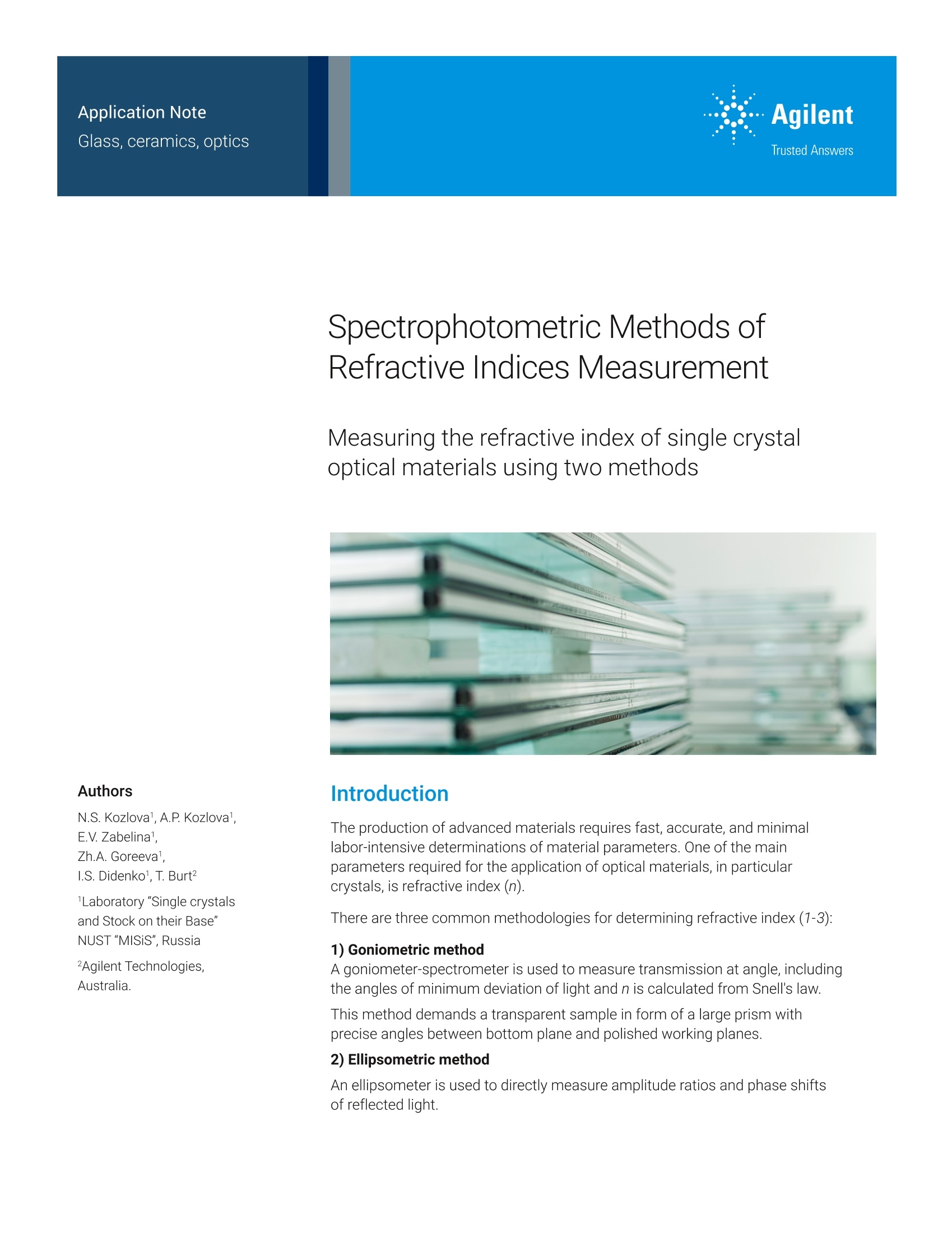
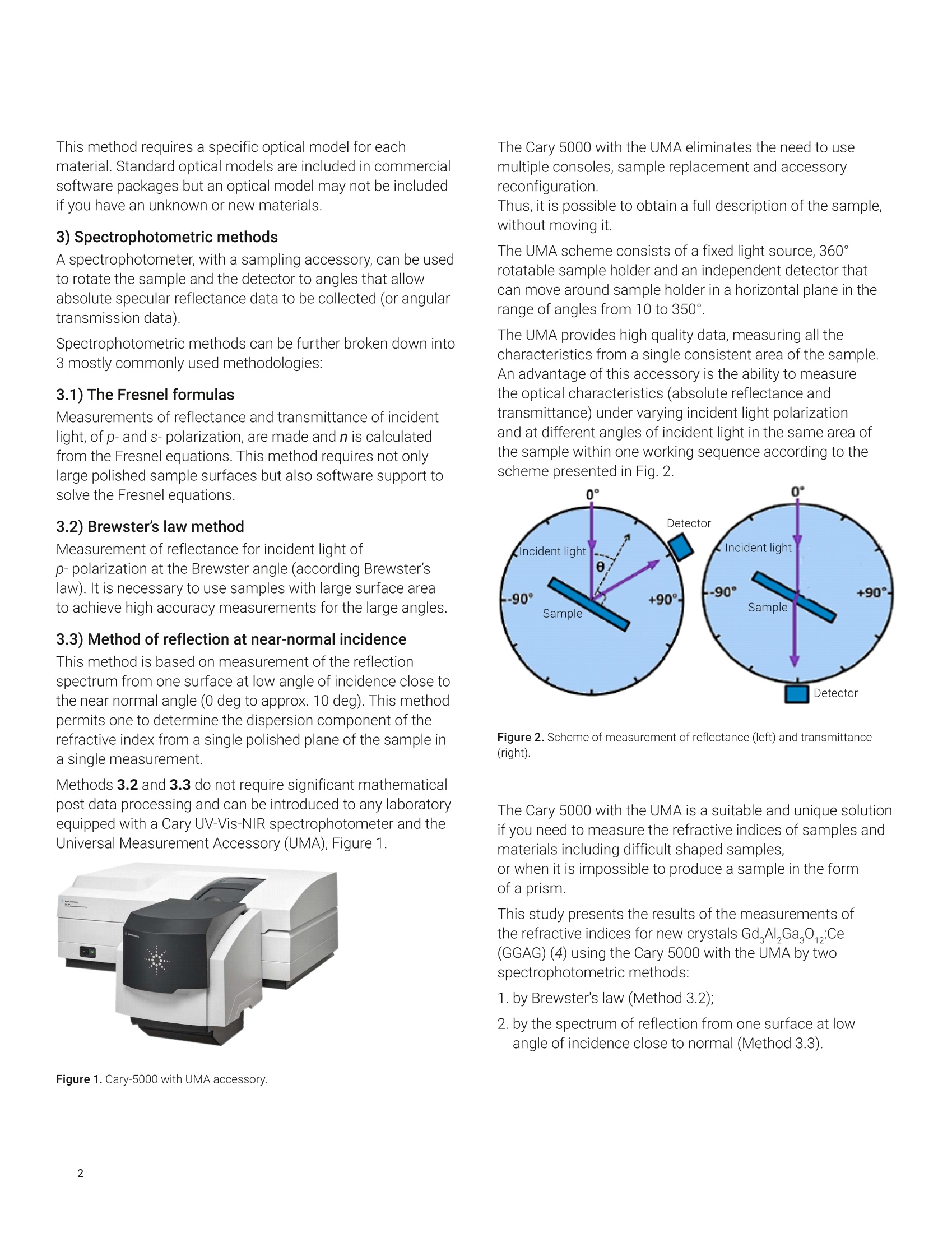


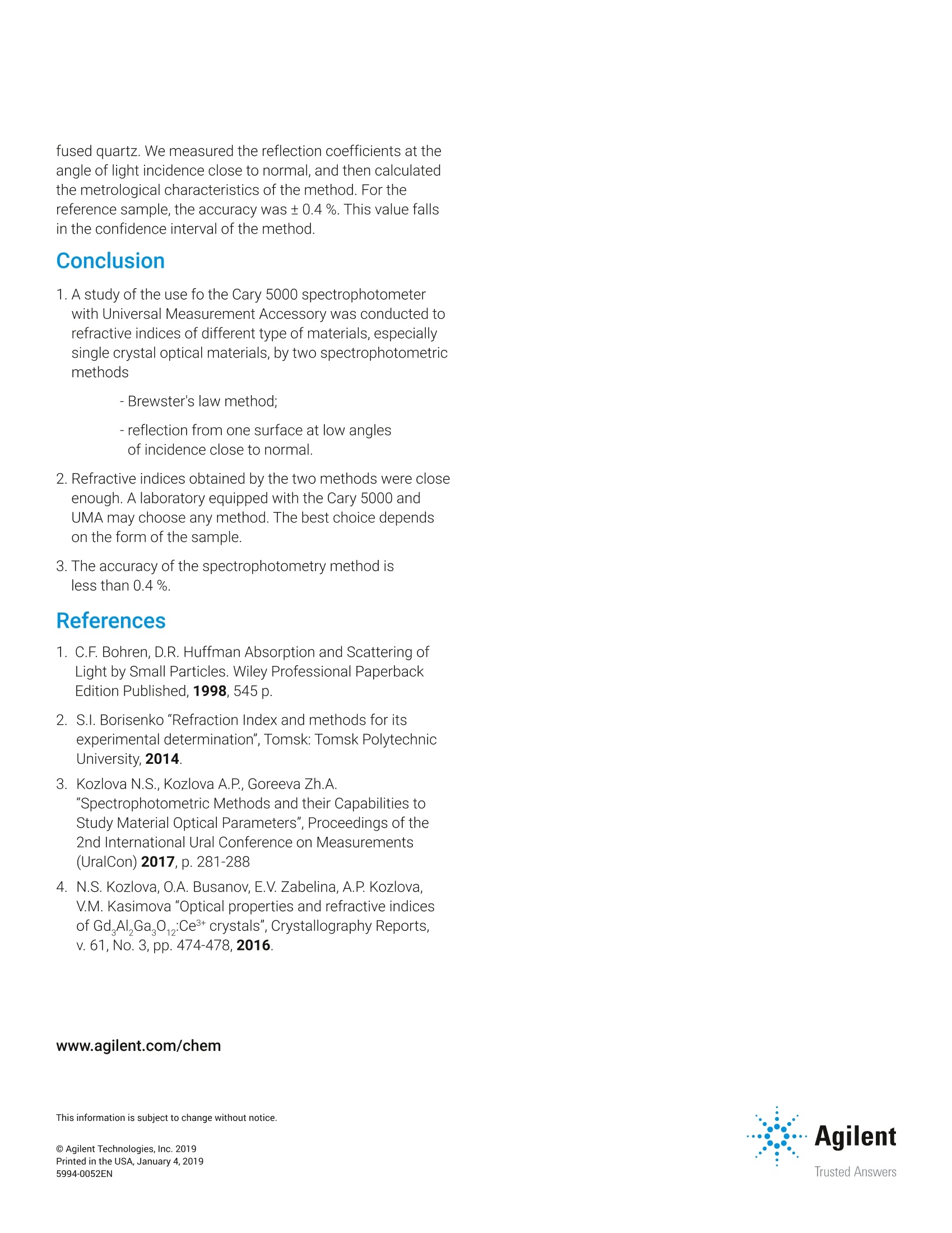
还剩3页未读,是否继续阅读?
安捷伦科技(中国)有限公司为您提供《单晶光学材料中折射率检测方案(紫外分光光度)》,该方案主要用于光学材料中折射率检测,参考标准--,《单晶光学材料中折射率检测方案(紫外分光光度)》用到的仪器有Cary 5000 紫外可见近红外分光光度计、Agilent Cary 7000 全能型分光光度计(UMS)
推荐专场
相关方案
更多

